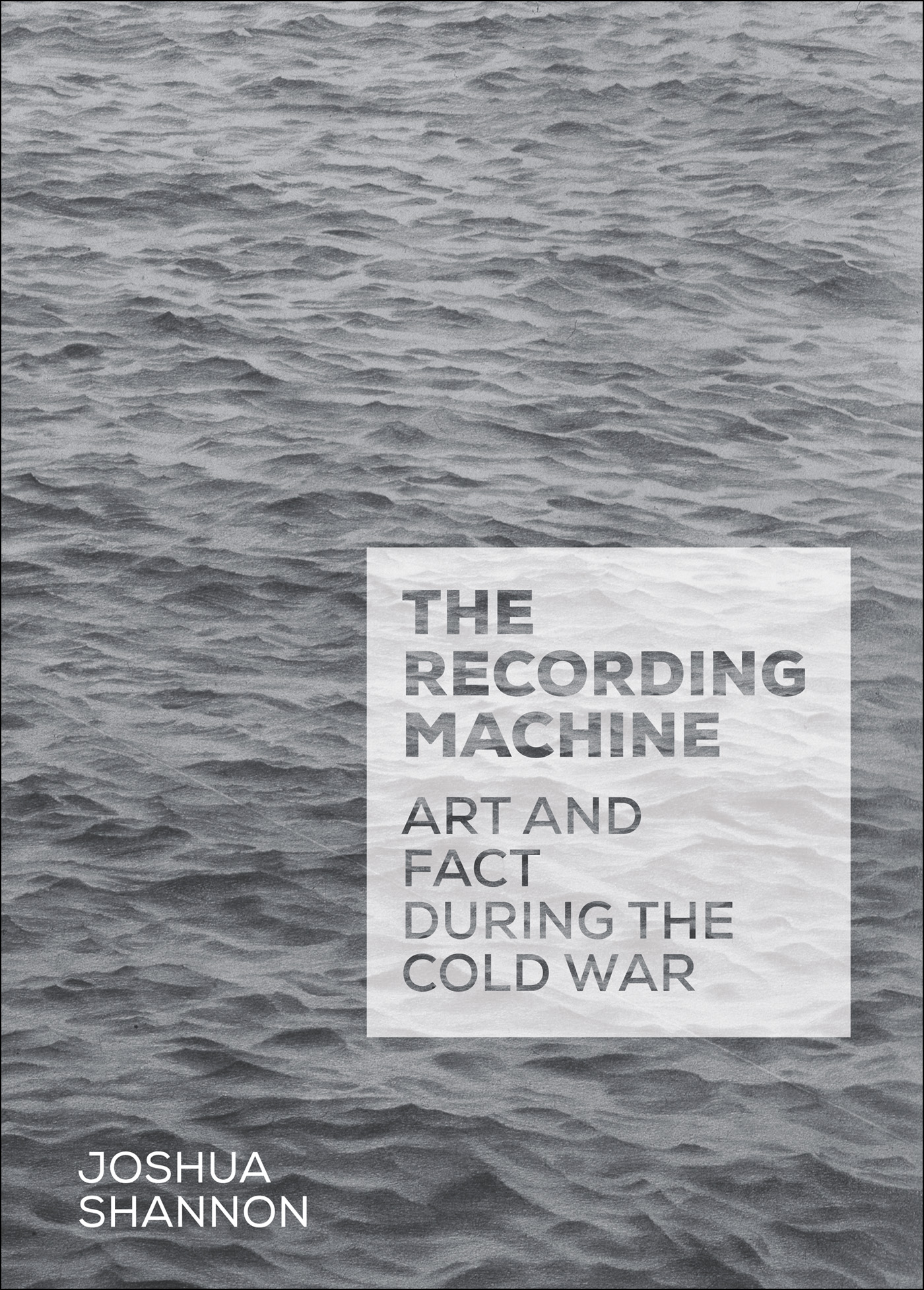Joshua Shannon: The Recording Machine: Art and Fact during the Cold War (2017)
Filed under book | Tags: · art history, cold war, conceptual art, fact, photography

“A revealing look at the irrevocable change in art during the 1960s and its relationship to the modern culture of fact.
This book offers a new understanding of the transformation of photography and the visual arts around 1968. Author Joshua Shannon reveals an oddly stringent realism in the period, tracing artists’ rejection of essential truths in favor of surface appearances. Dubbing this tendency factualism, Shannon illuminates not only the Cold War’s preoccupation with data but also the rise of a pervasive culture of fact.
Focusing on the United States and West Germany, where photodocumentary traditions intersected with 1960s politics, Shannon investigates a broad variety of art, ranging from conceptual photography and earthworks to photorealist painting and abstraction. He looks closely at art by Bernd and Hilla Becher, Robert Bechtle, Vija Celmins, Douglas Huebler, Gerhard Richter, and others. These artists explored fact’s role as a modern paradigm for talking, thinking, and knowing. Their art, Shannon concludes, helps to explain both the ambivalent anti-humanism of today’s avant-garde art and our own culture of fact.”
Publisher Yale University Press, New Haven, CT, 2017
ISBN 9780300187274, 0300187270
ix+230 pages
Review: Ina Blom (The Sixties, 2018).
Comment (0)Maja Fowkes: The Green Bloc: Neo-Avant-Garde Art and Ecology Under Socialism (2015)
Filed under book | Tags: · art history, central europe, communism, conceptual art, east-central europe, eastern europe, ecology, environment, land art, nature, neo-avant-garde, performance, performance art, socialism, yugoslavia

“Expanding the horizon of established accounts of Central European art under socialism, The Green Bloc uncovers the neglected history of artistic engagement with the natural environment in the Eastern Bloc. Focussing on artists and artist groups whose ecological dimension has rarely been considered, including the Pécs Workshop from Hungary, OHO in Slovenia, TOK in Croatia, Rudolf Sikora in Slovakia, and the Czech artist Petr Štembera, Maja Fowkes’s innovative research brings to light an array of distinctive approaches to nature, from attempts to raise environmental awareness among socialist citizens to the exploration of non-anthropocentric positions and the quest for cosmological existence in the midst of red ideology. Embedding artistic production in social, political, and environmental histories of the region, this book reveals the artists’ sophisticated relationship to nature, at the precise moment when ecological crisis was first apprehended on a planetary scale. ”
Publisher Central European University Press, New York and Budapest, 2015
ISBN 9789633860687, 9633860687
viii+299 pages
via Memory of the World
Reviews: Katalin Cseh-Varga (Springerin, 2015, DE), Juliane Debeusscher (Critique d’art, 2018).
PDF (32 MB)
Comment (0)Germano Celant: Art Povera (1969)
Filed under book | Tags: · art criticism, art history, arte povera, conceptual art, installation art, sculpture

Critical / photographic book documenting the “Art Povera / Arte Povera” movement. Includes short text followed by photographs for each artist: Walter de Maria, Michelangelo Pisteletto, Stephen Kaltenbach, Richard Long, Mario Merz, Douglas Huebler, Joseph Beuys, Eva Hesse, Michael Heizer, Ger van Elk, Lawrence Weiner, Luciano Fabro, Bruce Nauman, Joseph Kosuth, Jan Dibbets, Giovanni Anselmo, Robert Barry, Pier Paolo Calzolari, Dennis Oppenheim, Barry Flanagan, Robert Smithson, Giulio Paolini, Reiner Ruthenbeck, Alighiero Boetti, Giuseppe Penone, Franz Erhard Walther, Hans Haacke, Gilberto Zorio, Robert Morris, Marinus Boezem, Carl Andre, Emilio Prini, Richard Serra.
“This book does not aim at being an objective and general analysis of the phenomenon of art or life, but is rather an attempt to flank (both art and life) as accomplices of the changes and attitudes in the development of their daily becoming. This book does not attempt to be objective since the awareness of objectivity is false consciousness. The book, made up of photographs and written documents, bases its critical and editorial assumptions on the knowledge that criticism and iconographic documents give limited vision and partial perception of artistic work. The book, when it reproduces the documents of artistic work, refutes the linguistic mediation of photography. The book, even though it wants to avoid the logic of consumption, is a consumer’s item. … This book produces a collection of already old material. … In this book there is no need to reflect in order to seek a unitary and reassuring value, immediately refuted by the the authors themselves, rather there is the necessity to look into it for the changes, limits, precariousness and instability of artistic work.” (from Celant’s introduction “Stating That.”)
First published in Italian by Gabriele Mazzotta Publishers, Milan, 1969.
Publisher Praeger Publishers, New York, 1969
240 pages
Review: John Moffitt (Art J, 1970).
PDF (86 MB, no OCR)
Internet Archive (added on 2023-7-7)

